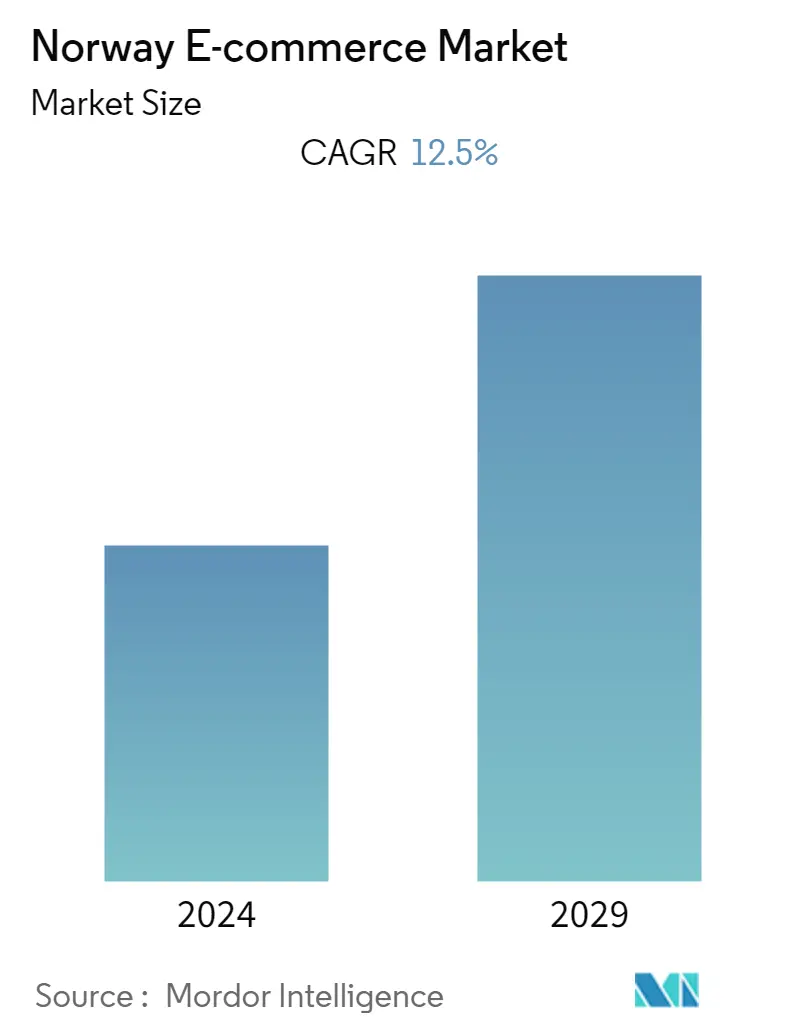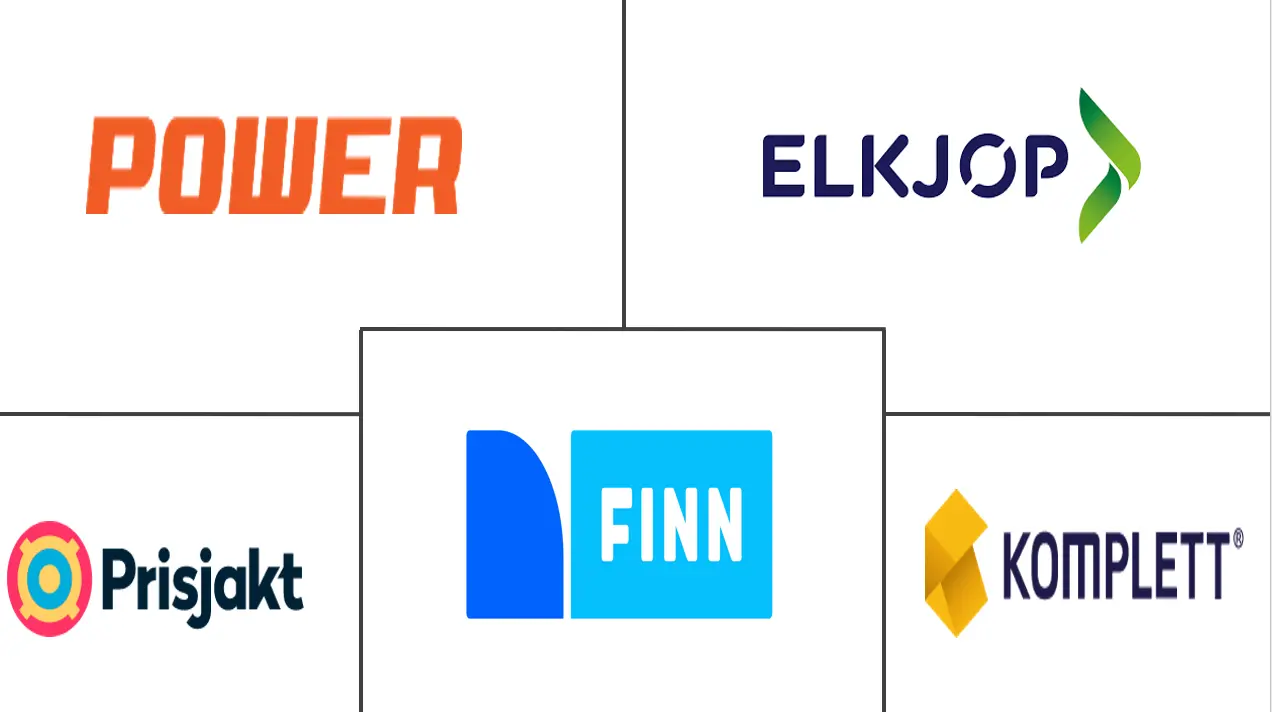Market Size of Norway E-commerce Industry

| Study Period | 2019 - 2029 |
| Base Year For Estimation | 2023 |
| Forecast Data Period | 2024 - 2029 |
| Historical Data Period | 2019 - 2022 |
| CAGR | 12.50 % |
| Market Concentration | Low |
Major Players
*Disclaimer: Major Players sorted in no particular order |
Need a report that reflects how COVID-19 has impacted this market and its growth?
Norway E-commerce Market Analysis
The Norway e-commerce market is expected to register a CAGR of 12.5% during the period 2022-2027. The factors driving the market's growth include better quality transport infrastructure, rising urbanization, and high access to the Internet, among others.
- One of the primary factors helping to drive the growth of the e-commerce market in Norway is how easy it is to deliver goods. Norway ranks decently on the World Bank Logistics Performance Index, which indicates its better quality of the transport infrastructure in the country, eases of arranging low-cost shipments, and less timeliness of freight. These factors are poised to drive the growth of the e-commerce market in Norway.
- Moreover, with 82.97% of the population living in an urban area, as reported by the World Bank, Norway remains one of the easiest countries in the world to deliver to. Furthermore, the high internet penetration across urban and rural areas of the country is also propelling the growth of the e-commerce market in the area.
- The market players are committed to continuous innovation and development in the market. For instance, players can be noted to indulge in personalizing the e-commerce experience by integrating artificial intelligence into the platforms. Furthermore, the vendors are leveraging the customer data to understand behavioral patterns and trends in order to make the platforms more customer-friendly.
- Manufacturers, vendors, and retailers considering selling products through the Internet have the opportunity to get in contact with customers more quickly but still need to consider challenges related to fulfillment, shipping, taxes, value-added tax (VAT), and EU regulations in Norway. According to the Digital Service Act, the e-commerce platforms requires to conduct annual risk assessments on the available content through their platform and its effects on fundamental rights, public health, and public security; including algorithms used, advertising, and content; to report information associated with a severe criminal offense and to suspend services that frequently provide illegal content.
- The COVID-19 outbreak accelerated an expansion of e-commerce towards new businesses, customers, and types of products. E-commerce has offered customers access to a variety of products from the convenience and safety of their homes. It has enabled firms to continue operating despite contact restrictions and other confinement measures. In the region, many operators of brick-and-mortar businesses, who often were forced to shut down their physical business completely, are now considering e-commerce an alternative sales channel.
